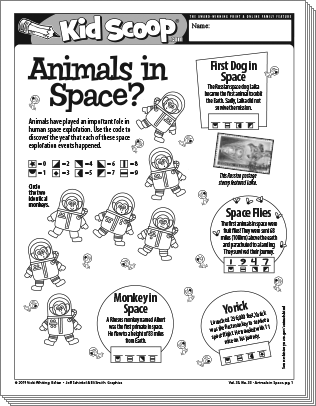 Long before man took his first “small step” on the moon’s surface in 1969, space scientists and engineers experimented to ensure that space travel would be safe. How could they do this without using humans as test subjects? By using a variety of animals scientists were able to determine changes in design and technology that culminated in man’s first visit to the moon 20 years later. Monkeys, dogs, mice and even fruit flies all played critical roles in building the space program. By carefully monitoring how animals behaved in space, and how they reacted to physical forces of space travel, designers were able to determine necessary conditions for human survival outside earth’s atmosphere and gravity. Surely these winged and furry friends deserve there own place of honor in the Space Hall of Fame! Learn more about the creature cosmonauts and animal astronauts who helped enable the perilous journey to the moon.
Long before man took his first “small step” on the moon’s surface in 1969, space scientists and engineers experimented to ensure that space travel would be safe. How could they do this without using humans as test subjects? By using a variety of animals scientists were able to determine changes in design and technology that culminated in man’s first visit to the moon 20 years later. Monkeys, dogs, mice and even fruit flies all played critical roles in building the space program. By carefully monitoring how animals behaved in space, and how they reacted to physical forces of space travel, designers were able to determine necessary conditions for human survival outside earth’s atmosphere and gravity. Surely these winged and furry friends deserve there own place of honor in the Space Hall of Fame! Learn more about the creature cosmonauts and animal astronauts who helped enable the perilous journey to the moon.
In this issue young explorers. engineers and animal lovers of all ages will:
- Read informational text about animals (and people) who flew into space between 1947 and 1969
- Use a code to sequence events in a timeline
- Understand the variety of animals used and their contribution to the space program prior to human flight
- Calculate sums to learn why a Russian dog gifted to an American president was so special
- Use the newspaper to research a big idea that became a reality; summarize and speculate how the idea came to be
- Write an imaginary description about life on the space station. Your big idea may just come true!
- Understand how libraries serve their communities in more ways than lending books
- Use a decoder ring to discover the name of a high interest fictional adventure about animals saving the earth
6 page PDF
